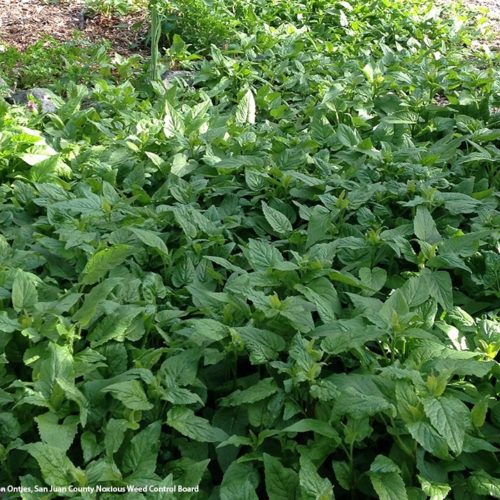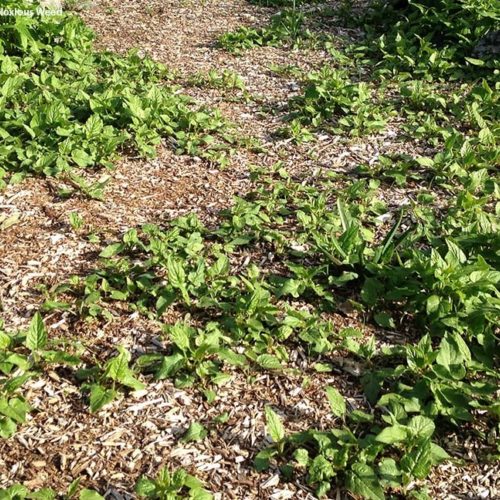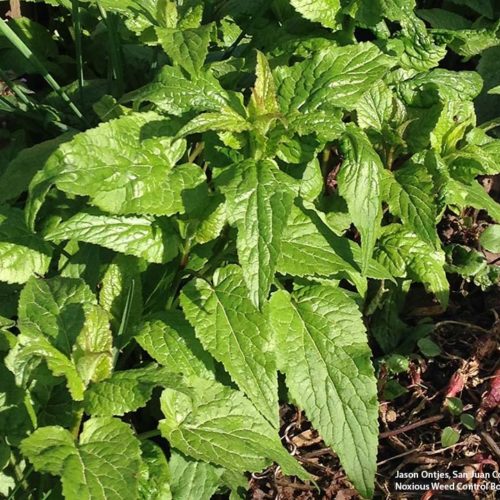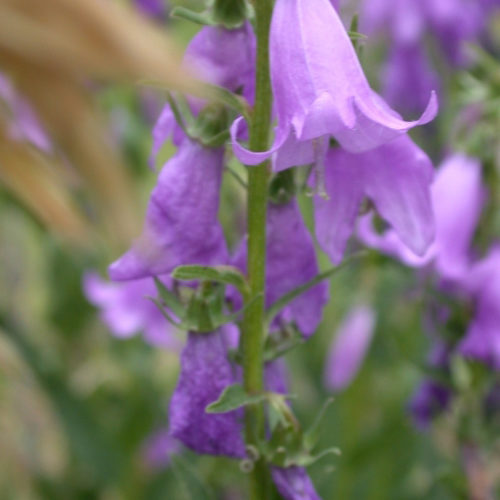Creeping bellflower
Campanula rapunculoides
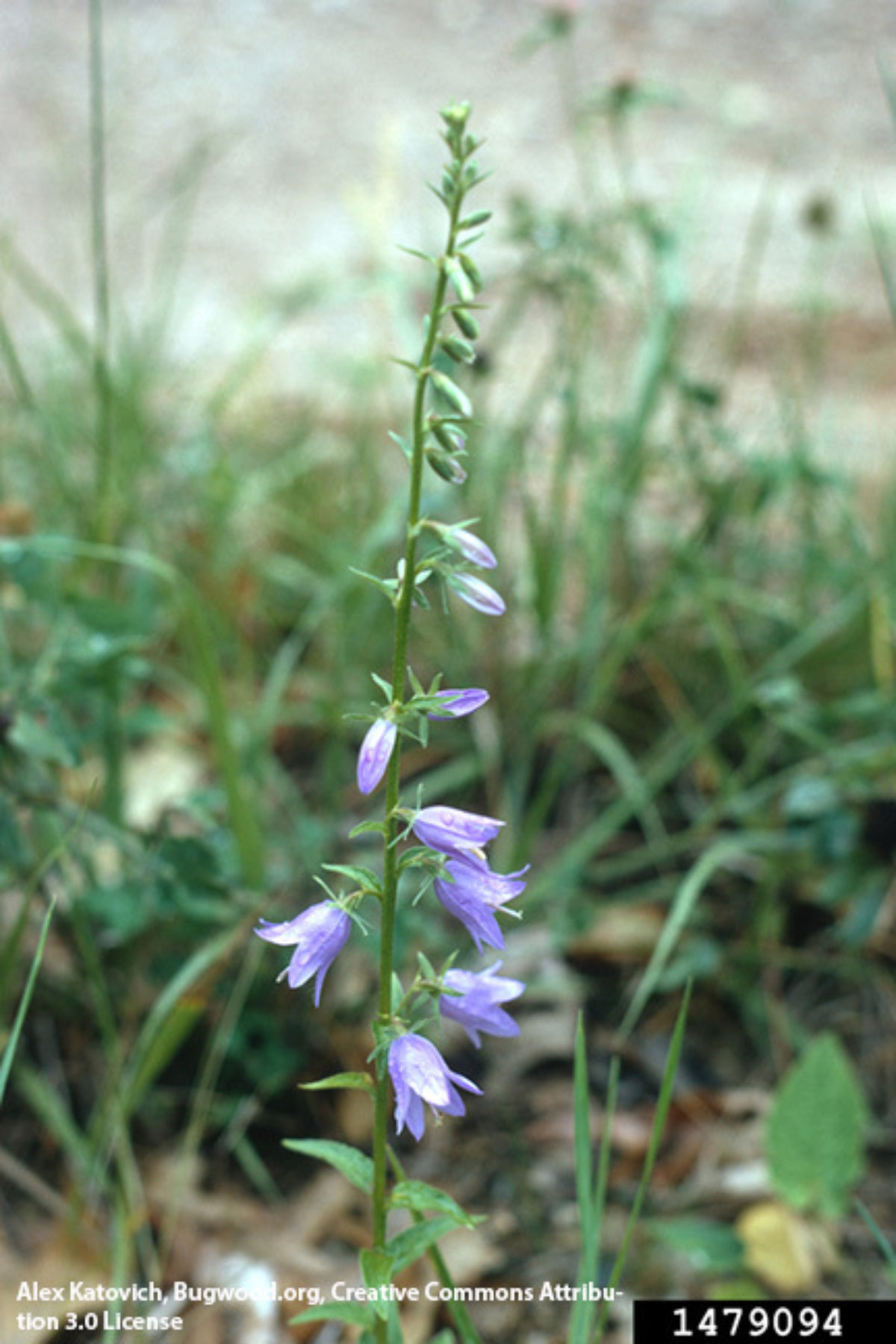
Family: Campanulaceae
Other Common Names: clochettes, European bellflower, roving bellflower
Weed class: monitor list
Native to: Europe and temperate parts of Asia
Is this Weed Toxic?:
not known to be
Why Is It a Noxious Weed?
This plant is on the monitor list - it is not a listed noxious weed in Washington. Please contact its sponsor Jason Ontjes at jasono@sanjuanco.com to report locations or for more information.
How would I identify it?
General Description
This spreading, annual plant's flowering stems can get over 30 inches tall
Flower Description
The blue-purple, 5-petaled, bell-shaped flowers droop along the entire length of the flowering stem, facing downward.
Leaf description
The basal leaves are narrow, hairy, with pointed tips, heart-shaped rounded bases, and the edges are serrated. The leaves get smaller and more like thin triangles the further up the flowering stem they are, untill they disappear completely.
Stem description
Long, thin stems can often be drooping under the weight of the numerous flowers growing along them.
Where does it grow?
It can survive in a variety of habitats, from full shade to sun, in wetlands and dry uplands, in disturbed habitats as well as intact ones.
How Does it Reproduce?
Spreads fast by rhizome as well as by seed
How Do I Control It?
Please refer to the PNW Weed Management Handbook, or contact your county noxious weed coordinator.
For More Information
UW Herbarium image database information on creeping bellflower
Invasive Plant Atlas of the United States creeping bellflower information
Information and images from Minnesota Wildflowers



